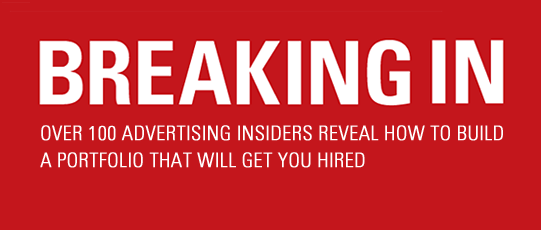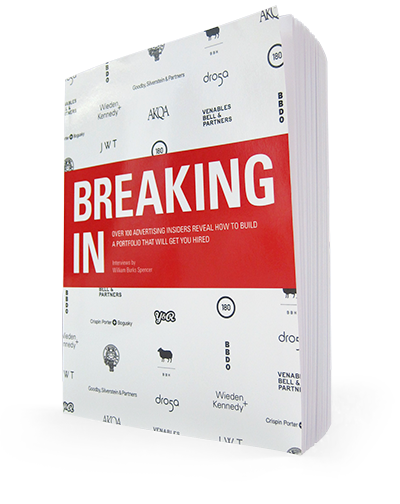Check out some great work from Graham Fink.
[ … ]
WS: When you say “a point of view” do you mean an approach to ads or just a way of looking at the world or both?
GF: If it’s an ad campaign, I want them to show me something coming from a distinct angle. And remember you’re selling something off the page. But there’s many different ways of doing it. What tone of voice are you going to use? If you ever had an argument with your girlfriend, you might talk to her in a particular tone of voice which would be different to talking to your mom if she’s very ill. It could be very different when talking to a car mechanic who fixed your car. If he’s made a complete hash of it, you might talk to him a bit differently if you’re expressing your anger, but then, if you want him to sort it out and fix it, you would use a different tone of voice again. There’s many strands, some of them are quite subtle. You need to decide which one you’re going to use to talk to your audience.
And I think it’s not done very often, I think it’s quite rare that someone would come in and would have really thought about those things. I’ve seen an awful lot of students, but a lot of them look like they just start doing ads. So they don’t think about who they’re talking to, and most of them don’t actually know their products very well. It’s much easier these days to find out about products because you have got the Internet and you can find out an awful lot of stuff. People say that everything is the same these days, but I don’t agree. I think if you really, really look, and you keep looking, and you look more, and you keep looking after that, you will come across stuff that is different.
In putting your point of view across, well, there are a couple of different ways of doing it. I mean by that, one is your point of view and what makes you, you. That’s very important. “What makes you unique? Why should I hire you?” I’ve got a great department, full of very interesting people, all capable of doing [ads]. They all have their strengths and weaknesses but together they make a great squad. “Squad”…I’m using a football analogy. And I’m not really looking for someone else who I can put on my squad who has the same qualities as someone else. I want someone who is different. I’ve got my strikers, I’ve got my fullbacks, I’ve got the firefighters, I’ve got the people who can do ads very, very quickly and always get me out of a mess. I’ve got the maverick striker who might be a pain in the ass, but occasionally, if he does score a goal, it’s the most amazing goal you’ve ever seen in your life. So I want dependable people, I want maverick people, I want great strikers, I want a great midfield who can pass on ideas to other people and hopefully they will take them on into a better place. So there’s lots and lots of different types of people who make up a great squad. Who make up a great creative department. I’m always looking for someone who could come in to the team but play a slightly different role. I think it’s a mistake that people look at D&AD and try copying. Look at D&AD and be inspired and then do your own thing. You’ve got to stamp your own point of view. But don’t look at it and copy what I’ve already seen before.
I don’t mind people coming in with books that are full of hundreds of ideas and are all completely wrong. But if there’s a kind of spark there, and there’s something in there that I couldn’t do myself, I know that I can train them, I can teach them. But if they’re coming in with very formulaic stuff that’s dull and boring and then there’s no “soul in the book,” then I’ll kind of think, “Well, I’ve got to spend the first year trying to teach them to be them again,” so that’s no use to me.
I want people coming in with lots of different types of new media. I like seeing lots of ideas in different media—different ways of expressing it. I don’t want people to just come in with a bunch of print ads in a book, or TV scripts. If you have got a great idea, show me how it can work in 30 channels. Don’t do three posters and one TV commercial. That’s just boring. Do a whole book on just this one idea. You could have just one portfolio with 30 to 40 different ways of doing this idea—that would be different. And when I’ve seen that one book, you show me five other books—that would be different.


Comments are closed.